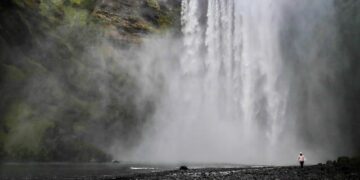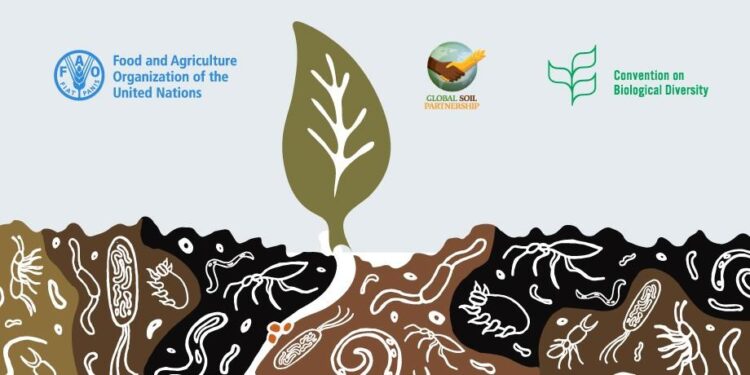In an unprecedented move to safeguard the planet’s health, scientists and policymakers are joining forces to establish a unified global soil biodiversity observatory. This collaborative initiative aims to bridge the gap between cutting-edge research and effective policy-making by creating a comprehensive network that monitors soil life across the globe. As soil biodiversity plays a crucial role in ecosystem functions, food security, and climate regulation, the observatory promises to provide vital data for informed decision-making and international environmental agreements. The effort reflects a growing recognition that addressing global challenges requires integrating scientific insight with coordinated policy action, marking a significant step forward in the stewardship of Earth’s hidden and invaluable ecosystems.
Bridging Scientific Research and Policy Frameworks to Safeguard Soil Biodiversity
Integrating cutting-edge scientific findings with robust policy frameworks remains pivotal in fortifying global efforts to safeguard soil biodiversity. Recent initiatives emphasize the necessity of a unified global soil biodiversity observatory, aiming to bridge gaps between researchers, policymakers, and stakeholders across nations. By harnessing interdisciplinary collaborations and promoting transparent data sharing, this initiative seeks to create a standardized monitoring system capable of tracking soil health at unprecedented scales and resolutions. The synergy of advanced molecular techniques, remote sensing technologies, and ecological modeling equips the scientific community to provide actionable insights tailored for policy implementation.
Key components driving this collaborative effort include:
- Standardized Protocols: Establishing universal guidelines for soil sampling and analysis.
- Policy Alignment: Integrating scientific data directly into international agreements and land management policies.
- Capacity Building: Empowering local institutions through training and resource sharing.
- Public Engagement: Raising awareness about the critical role of soil biodiversity in ecosystem services.
| Stakeholder Group | Role | Key Outcome |
|---|---|---|
| Researchers | Data collection and analysis | Reliable biodiversity metrics |
| Policymakers | Regulatory frameworks | Effective conservation policies |
| Local Communities | Sustainable land management | Enhanced ecosystem resilience |
| NGOs | Advocacy and outreach | Increased public engagement |
Unlocking the Potential of a Global Observatory for Real-Time Soil Health Monitoring
Harnessing the power of cutting-edge technology and international cooperation, a global observatory for real-time soil health monitoring promises to transform our understanding of soil ecosystems. By integrating advanced sensors, satellite data, and artificial intelligence, this initiative aims to provide continuous, high-resolution insights into soil biodiversity and functions across diverse landscapes. Such a dynamic platform will empower scientists and policymakers alike to detect early signs of degradation, track restoration efforts, and evaluate the impacts of climate change on these vital terrestrial resources.
Key features driving this ambitious observatory include:
- Standardized data collection: Harmonizing soil sampling protocols worldwide to ensure accuracy and comparability.
- Open-access database: Facilitating transparency and collaboration between researchers, governments, and stakeholders.
- Policy integration: Translating empirical soil health indicators into actionable frameworks for sustainable land management.
| Component | Function | Impact |
|---|---|---|
| Remote Sensors | Soil moisture & nutrient levels | Real-time alerts |
| AI Analysis | Pattern recognition & forecasting | Predictive soil health trends |
| Global Network | Data sharing & collaboration | Informed policymaking |
Key Recommendations for International Collaboration and Sustainable Soil Management
Effective international collaboration requires establishing robust frameworks that prioritize accessibility and data transparency across borders. Developing interoperable databases, shared protocols for soil sampling, and open-access platforms will empower scientists and policymakers to accurately monitor soil biodiversity trends worldwide. Additionally, fostering partnerships between governments, research institutions, and local communities ensures the integration of indigenous knowledge with cutting-edge scientific methods, creating a holistic approach to soil conservation that respects cultural contexts while addressing global challenges.
To promote sustainable soil management, it is imperative to incentivize practices that maintain and restore soil health at both regional and global scales. Policymakers should champion adaptive land-use strategies tailored to diverse ecosystems and climate zones, supported by continuous monitoring and evaluation. The following table outlines priority actions recommended for stakeholders to enhance soil biodiversity collaboration efficiently:
| Priority Action | Target Group | Expected Outcome |
|---|---|---|
| Harmonize Data Standards | Research Networks | Seamless data integration |
| Capacity Building Programs | Local Communities | Empowered stewardship |
| Policy Alignment Forums | Government Bodies | Consistent regulatory frameworks |
| Funding for Long-term Monitoring | International Donors | Reliable trend detection |
Key Takeaways
As the global community grapples with the accelerating loss of soil biodiversity, the call for integrated science and policy approaches has never been more urgent. Establishing a unified global soil biodiversity observatory promises to bridge crucial data gaps, inform sustainable practices, and guide international conservation efforts. By aligning scientific research with policy frameworks, stakeholders can ensure that soil ecosystems receive the attention and protection they urgently require. This collaborative endeavor represents a vital step toward safeguarding the foundation of life on Earth, highlighting the power of unified action in addressing environmental challenges.































